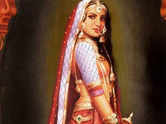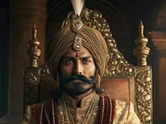01/5Mahabharata battle: Myth or Reality?

The Mahabharata, one of the world's longest epic poems, has captivated generations with its intricate narrative of cosmic struggles and moral dilemmas. Set against the backdrop of ancient India, the epic revolves around the conflict between the Pandavas and Kauravas, culminating in the legendary battle of Kurukshetra. While considered a revered scripture in Hinduism, the question of whether the Mahabharata is a historical account or a mythological allegory continues to spark scholarly debate. Exploring the origins and significance of this epic invites us into the rich tapestry of Indian mythology and cultural heritage.
02/5An Ithihas not a Katha


Indeed, the Mahabharata, a monumental epic, bears the distinctive designation of "itihas," signifying "thus occurred." This term, along with "Puraan," was meticulously crafted by ancient scholars to delineate between events of antiquity and those more recent. The deliberate choice of these words underscores the historical nature attributed to the epic's narrative. Unlike poetic or fictional compositions labeled as "mahakavya" or "katha," the Mahabharata's itihas status emphasizes its portrayal of events deemed to have unfolded in the annals of time, contributing to its enduring significance in both spiritual and historical realms.
03/5Ancient cities


The Mahabharata, an ancient Indian epic, has not only captivated readers with its intricate narrative but has also sparked archaeological explorations across North India. Over thirty-five sites have emerged as significant archaeological discoveries, aligning with the descriptions of ancient cities in the Mahabharata. Artifacts such as copper utensils, iron implements, seals, gold and silver ornaments, terracotta discs, and painted greyware pottery have been unearthed at these locations. Scientific dating of these findings resonates with the non-Aryan-invasion model of Indian antiquity, providing a tangible link between archaeological evidence and the rich tapestry of stories woven into the fabric of the Mahabharata.
04/5The city of Dwaraka


The exploration of marine archaeology off the coast of the ancient port city of Dwaraka in Gujarat, India, has yielded compelling evidence aligning with descriptions in Vedic scriptures. The submerged city at Dwaraka believed to be the ancient port city associated with Lord Krishna, reveals a remarkable landscape featuring expansive fort walls, piers, wharves, and a jetty. This underwater discovery strongly corresponds to the vivid depictions found in the Mahabharata and other Vedic literature, adding a tangible layer of historical authenticity to the ancient narratives of India. The findings not only enrich our understanding of the past but also underscore the cultural and historical richness embedded in Vedic traditions.
05/5Gregorian Calendar


It's a fascinating convergence of ancient narratives and modern timekeeping: the Gregorian Calendar aligns with the Kurukshetra War's proposed date, marking the commencement of Kali Yuga. According to this calendar, the significant event transpired on February 18, 3102 BCE, precisely at 2:27:30 AM. This synchronicity finds acceptance in both Eastern and Western cultures, affirming the consensus on the initiation of Kali Yuga and the passing of Lord Krishna. The juxtaposition of traditional beliefs with contemporary calendars provides an intriguing intersection where mythology meets historical reckoning, sparking contemplation on the fluid boundaries between ancient lore and the precision of modern chronology.































































closecomments
SIGN IN WITH
GoogleEmail